txt files
Type of resources
Topics
Keywords
Contact for the resource
Provided by
Years
Formats
Representation types
Update frequencies
-
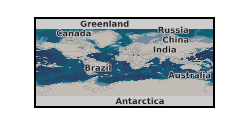
The dataset consists of elemental compositions determined for olivine and spinel from 13 ocean islands, including Azores, Balleny, Cook-Austral, Crozet, Cape Verde, Fernando de Noronha, Galapagos, Juan Fernandez, Marquesas, Society, Tristan-Gough, Tahiti, and Trindade). These samples were loaned from Sedgwick Museum, University of Cambridge and National History Museum, London, except the Galapagos samples provided by D. Geist. Elemental compositions determined for three secondary standards (San Carlos olivine, MongOl olivine, and NHNM164905 augite) are also included in the dataset. The data were acquired using a Cameca SX100 electron microscope at the Department of Earth Sciences, University of Cambridge, in June, July, August and November 2021. The elements analysed include Mg, Si, Fe, Al, Ca, P, Cr, Mn, and Ni in olivine, and Mg, Si, Fe, Al, Ca, Cr, Mn, and Ti in spinel. Data acquired from each analysis were saved in four txt files, which are for oxide concentrations, elemental concentrations, standard deviation, and detection limit, respectively. The data for ocean island samples were used to calculate olivine crystallisation temperature and mantle potential temperature based on an aluminium-in-olivine thermometer and modelling of mantle melting. All data collected within the project duration are in this dataset.
-
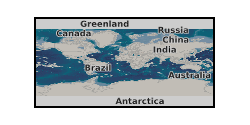
These data contain time series of stress, strain, confining pressure, pore pressure, pore volume, permeability and elastic wave velocities of samples of Purbeck Limestone deformed under hydrostatic and triaxial conditions at room temperature. All samples were saturated with decane as pore fluid.This dataset is used and fully described/interpreted in the paper: Brantut, N., M. Baker, L. N. Hansen and P. Baud, Microstructural control of physical properties during deformation of porous limestone, submitted to J. Geophys. Res.
-
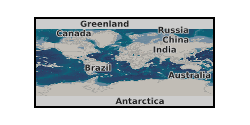
Data output from the numerical flow modelling in GRL manuscript ""Evidence for the top-down control of lava domes on magma ascent dynamics"", by Marsden, L., Neuberg, J. & Thomas, M., all of University of Leeds. The models were created using the Laminar Flow module in COMSOL Multiphysics v5.4 by L. Marsden. The following files are uploaded: Archive_Reference_Model.txt (Reference flow model: Gas loss function, Initial H2O content = 4.5 wt.% Excess pressure at depth = 10 MPa, Constant corresponding to crystal growth rate = 4e-6 s^-1 ) Archive_High_H2O.txt (Gas loss function, Initial H2O content = 10 wt.% Excess pressure at depth = 10 MPa, Constant corresponding to crystal growth rate = 4e-6 s^-1) Archive_No_Gas_Loss.txt (No gas loss, Initial H2O content = 4.5 wt.% Excess pressure at depth = 10 MPa, Constant corresponding to crystal growth rate = 4e-6 s^-1) Archive_Gamma_Low.txt (Gas loss function, Initial H2O content = 4.5 wt.% Excess pressure at depth = 10 MPa, Constant corresponding to crystal growth rate = 1e-6 s^-1) Archive_Excess_Pressure_0MPa.txt (Gas loss function, Initial H2O content = 4.5 wt.% Excess pressure at depth = 0 MPa, Constant corresponding to crystal growth rate = 4e-6 s^-1) Archive_Excess_Pressure_20MPa.txt (Gas loss function, Initial H2O content = 4.5 wt.% Excess pressure at depth = 20 MPa, Constant corresponding to crystal growth rate = 4e-6 s^-1) The files uploaded include the reference flow model and where a single key parameter has been changed in the flow modelling. We include data where the key parameter is at the upper or lower limit of the values tested. Data are not included where magma ascent is modelled to stall without the extrusion of a lava dome, as a time dependent model is not run in this case. A solution is provided using equilibrium modelling only. The following variables are output, at conduit centre unless specified: Depth (m), Time(s), Ascent velocity (m/s), Bulk Viscosity (Pa s), Crystal Content, Dome height (m), Gas Volume Fraction, Overpressure (Pa), Shear Stress at Conduit Wall (Pa)
-
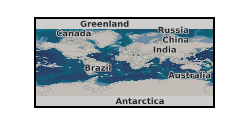
This dataset contains raw data from synthetic and experimental velocity steps analyzed using the MATLAB routine ‘steadystate.m’, as presented by Giacomel, P., Faulkner, D.R., Lambert, V., Allen, M.J (2024): ‘steadystate: A MATLAB-based routine for determining steady-state friction conditions in the framework of rate- and state- friction analysis’ – GSA, Geosphere. The data is provided in .zip folder containing the Velocity Steps and the outputs from steadystate.m, along with the scripts used to generate the figures shown in the Manuscript and Supplementary Material. The folder ‘Velocity_Steps’ notably contains the complete suite of mechanical data (subfolder ‘Mechanical_Data), the modelled rate- and state- friction parameters (subfolder ‘Modelled_RSF_Parameters SlipLaw’) obtained by assuming steady state at different displacements, as well as the linear detrended end members (i.e., at short to large displacements) fitted via inverse modelling (subfolder ‘Detrended_Velocity_Steps + Fit-Inversions’). Such observations were foundational for the development of the steadystate.m routine. Each subfolder is accompanied by a README.txt file that reports on the link between the raw .txt data with the MATLAB scripts generating the associated figures. For the sepiolite fault gouge used during the friction velocity steps, please refer to: Sánchez-Roa, C., Jiménez-Millán, J., Abad, I., Faulkner, D. R., Nieto, F., and García-Tortosa, F. J., 2016, Fibrous clay mineral authigenesis induced by fluid-rock interaction in the Galera fault zone (Betic Cordillera, SE Spain) and its influence on fault gouge frictional properties: Applied Clay Science, v. 134, p. 275-288.
-
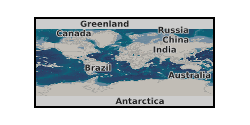
Data produced from NERC Grant NE/J008745/1. Grant Abstract: Iron sulfides are widespread in the environment, where they regulate and control the global geochemical iron and sulfur cycles. However, despite their application as indicators for seawater anoxia and recorders of early-life isotopic and paleomagnetic data, iron sulfide minerals are still largely unexplored compared to, for example, iron oxide minerals or the silicates or carbonates. Numerous iron sulfide phases are known, but many are highly unstable or only partially stable for a short time in the environment. Even the least reactive iron sulfide, pyrite, is no longer stable once exposed to air at the Earth's surface. Its dissolution leads to the problem of acid mine drainage, where sulfuric acid and any trapped toxic metals are released with devastating effects on the environment near the mine. However, iron sulfides also have beneficial effects on the environment, as they easily incorporate metals within their structure, and thus could be sinks for toxic metals or radioactive elements. An intriguing aspect of iron sulfides is the crucial role they may have played in the Origin of Life. Thin layers of iron-nickel sulfide are believed to have formed in the warm, alkaline springs on the bottom of the oceans on Early Earth. They are increasingly considered to have been the early catalysts for a series of chemical reactions leading to the emergence of life. The oxygen-free production of various organic compounds, including amino acids and nucleic acid bases - the building blocks of DNA - is thought to have been catalyzed by small iron-nickel-sulfur clusters, which are structurally similar to the highly reactive present day iron sulfide minerals greigite and mackinawite, yet we know little about how they form. In view of the likely role of such reactive minerals in the conversion of pre-biotic CO2 on Early Earth, we may well be able to harness iron sulfides as present-day catalysts for the same process, thereby potentially aiding the slowing down of climate change by converting the CO2 we produce into useful chemicals. In today's world, the importance of such iron-nickel-sulfide clusters as catalysts has been confirmed, as several life-essential iron-sulfur proteins help transform volatiles such as H2, CO and CO2 into other useful and less harmful chemicals. In all of the above examples, it is important to understand that the reactions that lead to the formation of all these minerals which are necessary for any of the geologically stable minerals to exist (i.e., pyrite) all rely on our understanding of the nucleation and growth of unstable precursors or of the reaction transforming one phase to another. Furthermore, the structure and reactivity of each of these phase determines its role and potential application in the environment. A few research groups in the UK and abroad have carried out high quality investigations of the properties of a number of iron sulfide minerals, but it is particularly difficult to investigate events early on in the nucleation process, even though they set the scene for all subsequent transformations. In this project we propose to employ a robust combination of state-of-the-art computation and experiment to unravel the nucleation of iron sulfide mineral phases. We aim to follow the reactions from the emergence of the first building block in solution, through agglomeration into larger clusters, their aggregation into nano-particles and the eventual transformation into the final crystal. We anticipate that this project, investigating short-lived processes which are only now accessible to study through the development of high temporal and spatial resolution in-situ characterization techniques and High Performance Computing platforms, will lead to in-depth step-by-step quantitative insight into the iron sulfide formation pathways and enhance our fundamental understanding of how a mineral nucleates in solution.
-

An additional core scanning dataset from the TH0424 drill core that was drilled onshore at Thornton Science Park, Cheshire, UK as part of the UK Geoenergy Observatories (UKGEOS) Cheshire ground investigation funded by UKRI/NERC. The approximately 100 m long core succession comprises the Sherwood Sandstone Group. This additional core scanning dataset pack contains high-resolution optical images and X-ray fluorescence (XRF) downcore point measurements obtained using a Geotek Core Workstation (MSCL-XYZ) at the Core Scanning Facility (CSF) at the British Geological Survey (BGS).
-

An additional core scanning dataset from the TH0424 drill core that was drilled onshore at Thornton Science Park, Cheshire, UK as part of the UK Geoenergy Observatories (UKGEOS) Cheshire ground investigation funded by UKRI/NERC. The approximately 100 m long core succession comprises the Sherwood Sandstone Group. This additional core scanning dataset pack contains high-resolution optical images and X-ray fluorescence (XRF) downcore point measurements obtained using a Geotek Core Workstation (MSCL-XYZ) at the Core Scanning Facility (CSF) at the British Geological Survey (BGS).
-

Data are either (1) depths and spacings between stylolites and faults within Unit IV, (2) images from IODP drill core image logs of the locations of samples observed, (3) photomicrographs and flatbed thin section scans of thin sections cut from samples, (4) SEM BSE or EDS data collected at Cardiff University. These data form the basis of: Leah et al. "Brittle-ductile strain localisation and weakening in pelagic sediments seaward of the Hikurangi margin, New Zealand", Tectonics, Submitted. Images and data from samples collected at IODP Expedition 375 Site U1520 (38°58.1532'S, 179°7.9112'E, 3522.1 mbsl). This is just seaward (east) of the trench of the Hikurangi Margin, New Zealand.
-

Thermal and Alternating Field demagnetisation data from Carboniferous-age rock material from Cumbria and the Scottish Borders sampled in 2017. This data is divided into multiple four letter coded sections which refer to a specific locality and/or experiment type. BORD are alternating field demagnetisation results on volcanic material from the Scottish Borders, 330 million years old, sampled in the summer of 2017, carried out by Dr Courtney Sprain. BORR are thermal demagnetisation results on volcanic material from Burnmouth Harbour, Longhoughton Beach, Pease Bay, Joppa Shore, Sugar Sands Bay and Ross Beach in the Scottish Borders, 330 million years old, sampled in the summer of 2017, carried out by Dr Courtney Sprain. CMBR are thermal demagnetisation results on rock material from around Cumbria, 330 million years old, and sampled in Spring 2017, sampled and carried out by Dr Courtney Sprain and Dr Mark Hounslow. CUMB are alternating field demagnetisation results on rock material from around Cumbria, 330 million years old, and sampled in spring 2017, sampled and carried out by Dr Courtney Sprain and Dr Mark Hounslow.
 NERC Data Catalogue Service
NERC Data Catalogue Service